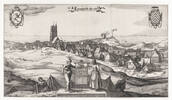Voorbij de verzuiling?
DOI:
https://doi.org/10.18352/bmgn-lchr.5397Keywords:
Social polarisation, Social Democracy, Protestantism, Roman CatholicismAbstract
J.C.H. Blom, J. Talsma, De verzuiling voorbij. Godsdienst, stand en natie in de lange negentiende eeuw
Beyond Pillarization?
This paper discusses a group of studies carried out at the University of Amsterdam on pillarization at a local level. Participants in this research programme concluded that additional research on the subject would be beneficial as it would provide a better understanding of how religion, social hierarchy and state- and nation-building developed. For this purpose, a brief outline of the pillarization process on a national level (1816-1917) with some concluding remarks is given: all pillars were different (in origin, structure and function); pillarization can only be understood if it is viewed as a dynamic process of rivalry; and, the liberals did not succeed in pillar formation, perhaps because they placed too much trust in their own position within the state, the law and the university. Pillarization is the term used to describe a vertical social stratification system in the Netherlands based on religious denomination.
Downloads
Downloads
Published
How to Cite
Issue
Section
License
Authors who publish with this journal agree to the following terms:
a) Authors retain copyright and grant the journal right of first publication with the work simultaneously licensed under a Creative Commons Attribution 4.0 International (CC BY 4.0) that allows others to share the work with an acknowledgement of the work's authorship and initial publication in this journal.
b) Authors are able to enter into separate, additional contractual arrangements for the non-exclusive distribution of the journal's published version of the work (e.g., post it to an institutional repository or publish it in a book), with an acknowledgement of its initial publication in this journal.
c) Authors are permitted to post their work online (e.g., in institutional repositories or on their website) prior to and during the submission process.
Authors are explicitly encouraged to deposit their published article in their institutional repository.










